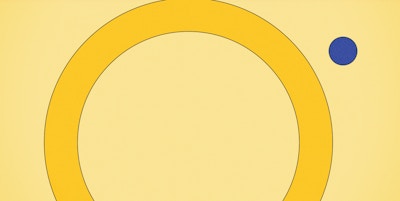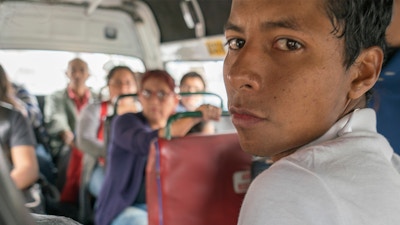Designing for the forgotten. Is human-centered design human-centered?

Illustration by William Conklin
For a long time, design fought against the prevalent misconception that it was a discipline confined to fashion and aesthetics. Over the last decades, the war of designers has been one of explaining to the world (and to big corporations) that design is about much more than beautifying things: it is a problem-solving attitude, a process, a method, that can help tackle any challenge, from teeny tiny usability issues (I know, not so tiny sometimes) to wicked problems (large, complex, and often a bit overwhelming).
Now that we’re comfortably seated in this broader framework, we don’t hesitate to boldly defend design as the discipline that will be responsible for shaping uncountable aspects of everybody’s future. Moreover, we are proud to state that we can do so by putting the user at the center of our designs: the consumer, the citizen, the patient. We claim ourselves as human-centered by definition. Human, as in, humanity. But… is it really that way? Human, as in humanity? I am afraid not quite.
Design is not for everyone
It is part of our job as designers to put at the center of our design process an accurately described subset of the population. We always design for some people. Some people are always better than no people, I guess. However, this means there are still many people we are choosing not to design for. Which is OK if we are designing an auto dealership or a high-end pair of headphones. But if we publicly commit ourselves to design the future of humanity, leaving out most of the population is, to put it mildly, totally not cool.
At Designit we call this out-of-the-frame population “the forgotten.” It is quite a broad concept, and it may vary throughout time and space, but they are always there. In a way, whenever we are designing for a majority, for the standard, we will be leaving some people behind. Our design (mea culpa) is Western-centric, male-centric, middle/upper class centric, young and urban-centric. If you are an aged woman from a small village 50 km north from Lusaka, with five kids, eight grandchildren, and one cow, chances are nobody will be commissioned to design anything for you. Why bother?
And still, someone should.
If our project is really to design the future of humanity in so many aspects, we should start by including the forgotten in the picture. Many efforts have been done in the past to do so, and after getting some of these projects under my belt, I’ve learnt that designing for the forgotten is far from trivial. And, made without caution, it can actually do more harm than good.
These are some of the limits and challenges I have encountered when designing for the forgotten. If you are involved in one of these projects, please think of them and don’t make a fool of yourself.

When guiding participants through the activities, some of them might get lost, so it’s good practice to keep the instructions visible during the exercise.

Design as a new form of colonialism
Been there, done that. We land in a ‘poor’ country with our MacPros, our cool Canon DSLR cameras, our hipster Moleskine notepads, and our tons of colorful sticky notes, ready to design their way out of poverty and exclusion. We believe we can save them, because, hey, we know how to design and that is enough, right? In my honest opinion, most of the times we do mean good, and we do believe we can make a difference. However, the line between being optimistic and being patronizing is very thin. We should learn to bring design as a method that is there to serve the community, not to evangelize it with our one and only truth. Power relations are tricky, and we need to be aware of which kind of attitudes and behaviors we are reinforcing with our acts and presence. When a bunch of cool dressed, sharp, smart, and warmhearted designers show up in a village in Tamale, Ghana, “to solve their problems,” they are not only bringing their knowledge. Their very presence communicates so many things at so many levels, and generates so many consequences we really need to be aware of, and try to control. I happen to be talking about Africa now, but it works the same for other types of social and power relations happening two blocks away from our office.
Design as a barrier to innovation
Following from the risks of design colonialism, when designers use their experience to foster change in a different context, we are at risk of leading that change towards what is already familiar to us. The process of solving a problem through design methods should be open to finding solutions that do not meet the standards of the designers, but of the users. Our approach should be to facilitate and encourage innovation that fits the needs and desires of the community and culture we are working with, not that leads them to become like us. Forgive me for using ‘us’ and ‘them.’ I hate it. But I hope you will allow me the license.
Design as an obstacle to communication
We designers love our tools, canvases, templates, and journeys. We love our cards, our icons, and our sticky dots. They work for us because they help us create a common language among ourselves and, most of the time, with our users. And as with any language, it works only to the extent to which it facilitates communication. And it may not. It is our responsibility to make sure we use a language that is intelligible to the people we are working with. This is not only about literacy rates which may be very low among some environments at the base of the pyramid. For some people, I am thinking of those who do not have a linear left-to-right writing, or who are not familiar with timelines with the past in the left and the future in the right; same happens with 2D representations of a city map (or any map for that matter): some people have never seen a map and will not be able to understand the lines and shapes on a paper unless you ask them to humor you and imagine their village as it would be seen by a bird flying over it, and still they may struggle with the idea. I saw a group of kids using brown color to represent water in Kampong Speu, Cambodia. Needless to say I was shocked when they didn´t take the blue crayon. And no need to start bringing examples of crazy misunderstandings of icons that could endanger people by encouraging a misusage of toxic materials. We need to adapt our tools to the cultural, educational, and personal context to make sure they encourage communication instead of misunderstanding.
Design as a troublemaker
Social systems are interesting and complex. And as social systems go, there are many reasons why the forgotten are part of a particularly fragile or sensitive one. Whenever we touch something in a system, it will naturally move around to accommodate any change, and readjust to the new elements of the game. As designers, we need to be particularly careful when we are interfering into (sorry, I mean “designing for”) such a sensitive system. Imagine you are designing a new form to simplify the process of opening a bank account in a rural and isolated area. If you create an individual form, with only one line for the account owner’s name, the consequences could be that women in that area will lose any control of the finances of the family, and will be left out of any real decision making, regarding money, or even be removed from the ownership of the family farm’s revenues. In a nutshell, we have a responsibility, above all: make no harm.
As designers, we are supposed to have the experience and skills to tackle difficult challenges and come up with solutions. That’s an asset we should learn to use in a greater sense. One way to do so is to start by being aware of the existence of the forgotten. How might our ideas impact their lives? What could we do to include them in, not only in the outcomes, but in the processes? How could we share our experiences and methods with others so they can apply them themselves to their own challenges and environments?
Bringing the power of design to humans — as in humanity. An exciting project, and also a wicked problem indeed. It starts with no longer forgetting the forgotten. But to do this, we must be aware of our own limits, biases and challenges, and conduct ourselves with a bit of caution and a lot of respect.